Table of Contents
Picture this: you’ve just invested in a beautiful espresso machine, sourced some premium beans, and you’re ready to pull your first shot at home. You tamp with confidence, hit the brew button, and… disappointment. The espresso tastes sour, bitter, or just plain wrong. Before you blame the beans or your technique, let me share a secret that transformed my home espresso game: grind size is the invisible conductor orchestrating your espresso’s flavor symphony.
I learned this lesson the hard way during my first month as a home barista. Despite following every tutorial and buying quality gear, my shots were consistently off. It wasn’t until an experienced barista friend watched me brew and immediately spotted my grinder settings that everything clicked. The relationship between espresso grind and flavor isn’t just important—it’s absolutely fundamental to brewing café-quality espresso at home.
Key Takeaways
- Grind size directly controls extraction speed: Finer grinds slow water flow and increase extraction, while coarser grinds speed up flow and reduce extraction
- Under-extraction creates sour, acidic flavors: When your grind is too coarse, water rushes through too quickly, leaving behind the sweet and balanced compounds
- Over-extraction produces bitter, harsh notes: Too fine a grind causes water to linger too long, pulling out undesirable bitter compounds
- The “sweet spot” varies by bean and roast: Every coffee requires slight grind adjustments to achieve optimal flavor balance
- Small adjustments make huge differences: Even tiny changes in grind size can dramatically transform your espresso’s taste profile
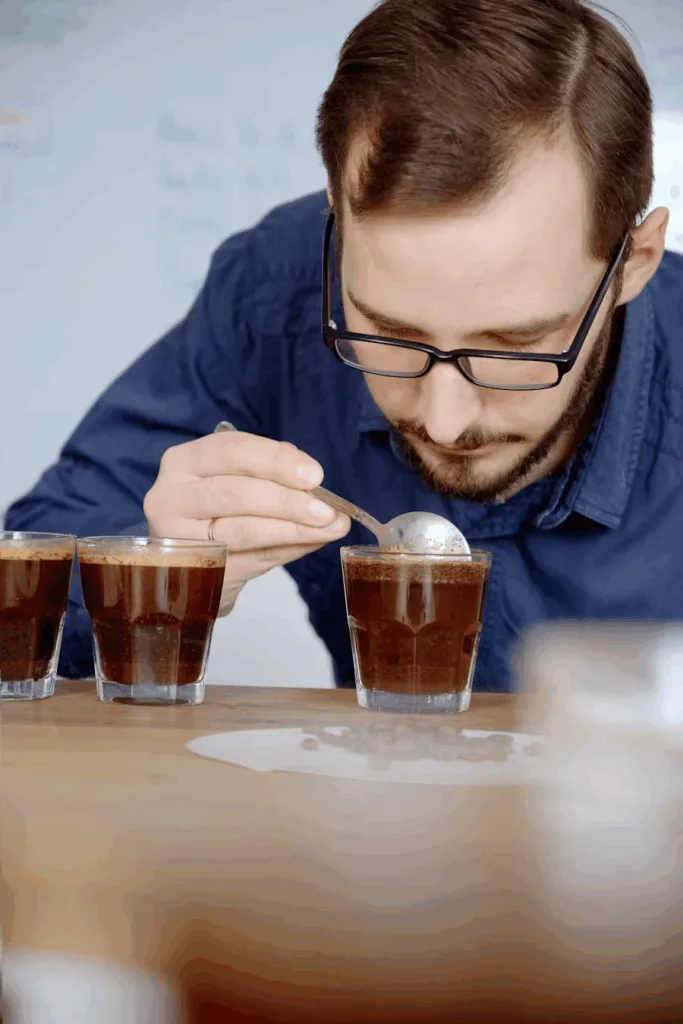
Understanding Espresso Extraction: The Foundation of Great Flavor
Before we dive into grind specifics, let’s talk about what’s actually happening when water meets coffee. Extraction is the process where hot water dissolves the soluble compounds from your ground coffee beans. Think of it like making tea—the longer you steep, the stronger it gets. But with espresso, we’re working with much shorter timeframes and higher pressure.
During a typical 25-30 second espresso shot, water extracts different compounds at different rates:
- First: Acids and bright, fruity notes (0-10 seconds)
- Second: Sugars and sweet, balanced flavors (10-20 seconds)
- Third: Bitter compounds and harsh tannins (20+ seconds)
The magic happens when we extract just enough to get those beautiful sweet notes without pulling too many bitter compounds. And here’s where espresso grind and flavor become inseparable partners—your grind size controls how fast this extraction happens.
The Science Made Simple
When you grind coffee, you’re creating surface area. More surface area means water can access more of the coffee’s soluble compounds. It’s like the difference between dissolving a whole sugar cube versus granulated sugar—the smaller pieces dissolve much faster.
Finer grinds = More surface area = Faster extraction = Stronger flavor
Coarser grinds = Less surface area = Slower extraction = Lighter flavor
But here’s the catch: espresso also involves pressure and time. If your grind is too fine, water can’t flow through properly, leading to over-extraction. Too coarse, and water rushes through before extracting enough flavor compounds.
How Grind Size Affects Espresso Flavor Profiles
Let me walk you through the flavor journey as grind size changes. I’ve experienced every point on this spectrum, and understanding these relationships has been crucial for my espresso education.
Too Coarse: The Under-Extraction Zone ⚠️
When your grind is too coarse, you’ll taste:
- Sharp sourness that makes you pucker
- Thin, watery body with no richness
- Lack of sweetness or balance
- Fast extraction (shots pulling in under 20 seconds)
- Pale, thin crema that disappears quickly
I remember pulling shots that finished in 15 seconds—they looked weak and tasted like coffee-flavored water with a sour punch. The water was basically sprinting through the coffee bed without picking up those crucial sweet compounds.
Just Right: The Sweet Spot 🎯
Perfect grind size delivers:
- Balanced acidity that brightens without overwhelming
- Rich, syrupy body with satisfying weight
- Natural sweetness that doesn’t need sugar
- Proper timing (25-30 second extraction)
- Golden, thick crema that persists
This is where the magic happens. You’ll taste the coffee’s origin characteristics—whether it’s chocolatey notes from Brazilian beans or bright fruit from Ethiopian varieties.
Too Fine: The Over-Extraction Territory ⚠️
When you go too fine, expect:
- Harsh bitterness that lingers unpleasantly
- Astringent, dry finish that coats your mouth
- Muddy, unclear flavors where nothing stands out
- Slow extraction (shots taking 40+ seconds)
- Dark, thick crema that may look impressive but tastes bitter
I’ve pulled plenty of these shots—they look dramatic with their slow, syrupy flow, but they taste like coffee mixed with disappointment.
Research from Coffee Ad Astra demonstrates how uniform particle size distribution dramatically improves espresso balance and repeatability.
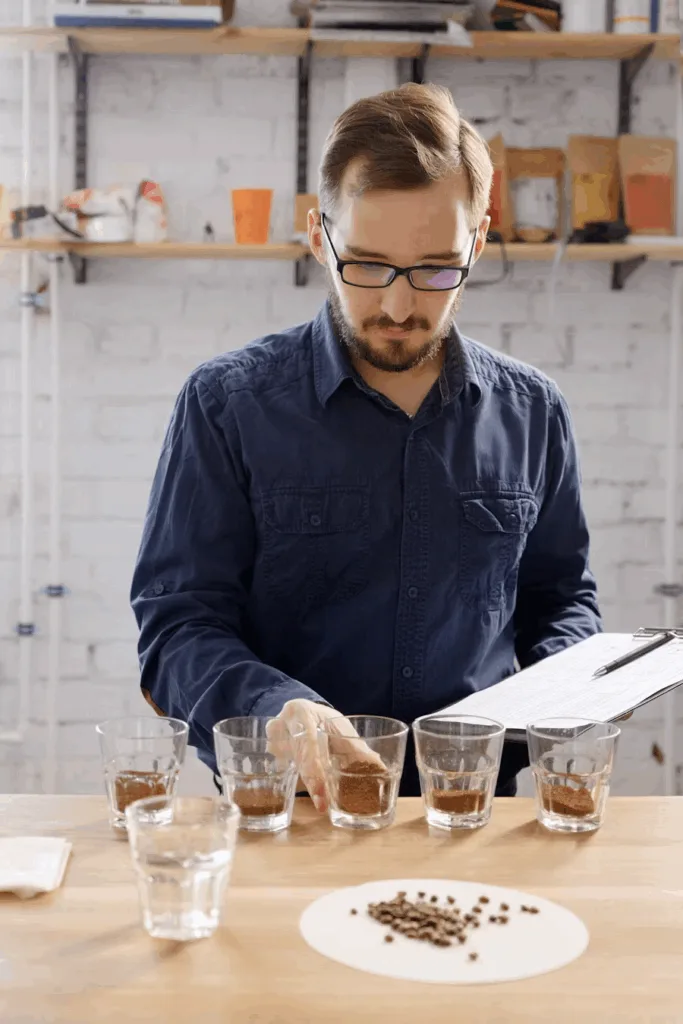
The Technical Side: Particle Size and Surface Area
Let’s get a bit nerdy for a moment—understanding the technical aspects will make you a more confident home barista. When we talk about espresso grind and flavor, we’re really discussing particle physics in your kitchen.
Particle Distribution Matters
Quality grinders don’t just make particles smaller—they create consistent particle sizes. Cheaper blade grinders produce what we call “boulders and fines”—huge chunks mixed with powder. This creates uneven extraction where some particles are over-extracted (bitter) while others are under-extracted (sour).
Burr grinders solve this by crushing beans between two surfaces, creating more uniform particles. This consistency is why investing in a good grinder often improves espresso more than upgrading your machine.
Surface Area Mathematics
Here’s a mind-bending fact: when you halve the diameter of coffee particles, you double the surface area available for extraction. This exponential relationship explains why tiny grind adjustments create massive flavor changes.
Consider these numbers:
- Coarse grind: ~1,000 particles per gram
- Medium grind: ~5,000 particles per gram
- Fine espresso grind: ~15,000+ particles per gram
Each step down dramatically increases extraction potential, which is why proper equipment selection becomes so crucial for consistent results.
Finding Your Perfect Grind Setting
Now for the practical stuff—how do you actually dial in your grind? I’ve developed a systematic approach that’s saved me countless bad shots and wasted coffee.
Start with Timing
Before you taste anything, watch your shot timing:
- Aim for 25-30 seconds total extraction time
- Adjust grind size first, dose and tamp second
- Make one change at a time to understand its impact
The Step-by-Step Dialing Process
Step 1: Baseline Shot
- Use your current grind setting
- Dose 18-20g (depending on your basket)
- Level tamp with consistent pressure
- Time your shot from button press to stop
Step 2: Evaluate and Adjust
- Too fast (under 20 seconds): Go finer by 2-3 clicks
- Too slow (over 35 seconds): Go coarser by 2-3 clicks
- Good timing but tastes off: Make smaller adjustments (1 click)
Step 3: Taste and Refine
Once timing is right, fine-tune for flavor:
- Still sour: Go slightly finer
- Getting bitter: Go slightly coarser
- Perfect: Write down your settings!
My Personal Dialing Story
I’ll never forget dialing in my first single-origin Ethiopian beans. They were expensive, and I was determined to get them right. My first shot was a disaster—sour and thin, finishing in 18 seconds. After going progressively finer over six shots, I hit 28-second timing but the flavor was still off.
The breakthrough came when I realized I needed to taste more critically. The seventh shot had beautiful blueberry notes emerging, but there was still a sharp edge. One more click finer, and suddenly I was tasting café-quality espresso with incredible fruit clarity and natural sweetness. That’s when I truly understood how espresso grind and flavor work together.
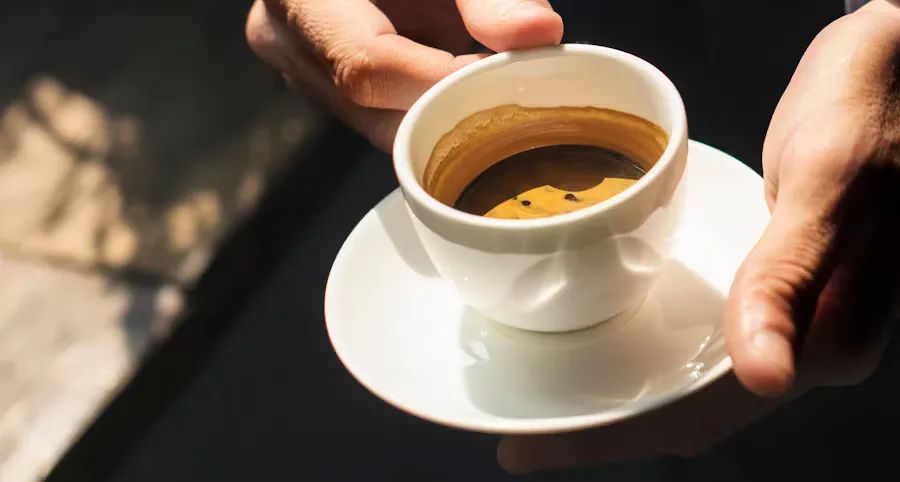
Troubleshooting Common Flavor Issues Through Grind Adjustment
Let’s solve some specific flavor problems you might encounter:
Problem: Shots Taste Sour and Sharp
Likely Cause: Under-extraction due to too-coarse grind
Solution:
- Go 2-3 clicks finer
- If timing becomes too slow, increase dose slightly
- Taste and continue adjusting finer until sourness disappears
Problem: Bitter, Harsh Aftertaste
Likely Cause: Over-extraction from too-fine grind
Solution:
- Go 2-3 clicks coarser
- If shots become too fast, decrease dose slightly
- Continue adjusting until bitterness subsides
Problem: Weak, Watery Body
Likely Cause: Under-extraction or insufficient dose
Solution:
- First try going finer by 1-2 clicks
- If that doesn’t help, increase dose by 1-2g
- Ensure you’re using fresh beans (within 2-4 weeks of roast date)
Problem: Muddy, Unclear Flavors
Likely Cause: Over-extraction or inconsistent grind
Solution:
- Go slightly coarser
- Check your grinder for consistency issues
- Consider if your beans are too old or your grinder needs cleaning
For specific recommendations and detailed comparisons, check out our equipment reviews where we test and evaluate grinders across all price ranges.
Maintenance for Consistent Results
Your grinder’s performance directly affects the espresso grind and flavor relationship:
Weekly: Clean your grinder’s burrs and chamber of old coffee residue
Monthly: Deep clean and calibrate your grinder
Annually: Consider professional servicing or burr replacement for heavy-use grinders
The Science Behind Extraction: Going Deeper
Understanding extraction science helps you make better decisions about grind adjustments. Let’s explore what’s happening at the molecular level:
Solubility and Time
Coffee contains hundreds of flavor compounds with different solubility rates:
Highly Soluble (extract first):
- Acids and bright notes
- Caffeine
- Some sugars
Moderately Soluble (extract second):
- Complex sugars
- Balanced flavor compounds
- Aromatic oils
Low Solubility (extract last):
- Bitter alkaloids
- Tannins
- Harsh compounds
The goal is extracting enough of the first two categories while minimizing the third. Grind size controls how quickly water can access and dissolve these compounds.
Pressure’s Role in Extraction
Espresso’s 9-bar pressure forces water through the coffee bed much faster than gravity-fed brewing methods. This pressure amplifies the effects of grind size changes:
- Fine grinds create more resistance, slowing water flow and increasing contact time
- Coarse grinds offer less resistance, allowing water to flow quickly with minimal extraction
This pressure-grind relationship is why espresso grind adjustments have such dramatic effects compared to pour-over or French press brewing.
Regional and Cultural Variations in Espresso Grinding
Different coffee cultures have developed unique approaches to the espresso grind and flavor relationship:
Italian Tradition
- Emphasizes darker roasts with slightly coarser grinds
- Focuses on body and crema over origin characteristics
- Typically uses blends designed for consistency
Third Wave Approach
- Lighter roasts with finer, more precise grinding
- Highlights origin characteristics and processing methods
- Often uses single-origin beans
Modern Home Barista Movement
- Combines traditional techniques with scientific precision
- Emphasizes experimentation and documentation
- Uses technology for consistency and repeatability
Understanding these approaches helps you decide what style resonates with your taste preferences and brewing goals.
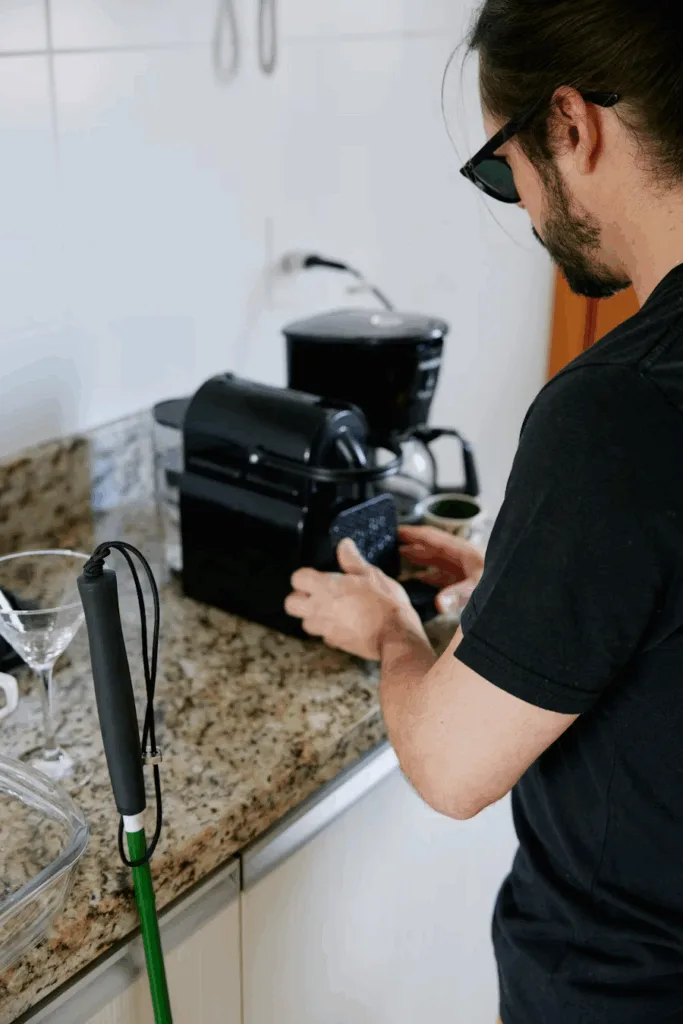
Building Your Espresso Knowledge
Mastering the espresso grind and flavor relationship is just the beginning of your espresso journey. Here are resources to continue learning:
Recommended Learning Path
- Master basic grind adjustment using the techniques in this article
- Experiment with different beans to understand how origin affects grinding needs
- Learn about water quality and its impact on extraction
- Explore advanced techniques like pressure profiling and temperature control
Connecting with the Community
The espresso community is incredibly welcoming and knowledgeable. Consider:
- Joining online forums and social media groups
- Visiting local specialty coffee shops to taste professional espresso
- Attending cupping sessions or brewing classes
- Following reputable coffee educators and roasters
For more comprehensive guides and equipment reviews, explore our complete resource library where we cover everything from beginner basics to advanced techniques.
Conclusion: Your Journey to Perfect Espresso
The relationship between espresso grind and flavor is both an art and a science. It’s the foundation that everything else builds upon—your expensive espresso machine, premium beans, and perfect technique all depend on getting this fundamental relationship right.
Remember these key principles as you continue your espresso journey:
Start with timing, refine with taste. Get your extraction time in the 25-30 second range first, then make small adjustments based on flavor.
Change one variable at a time. This is the only way to truly understand how each adjustment affects your final cup.
Keep detailed notes. Your future self will thank you when you can quickly dial in a new bag of beans based on past experience.
Embrace the process. Every “bad” shot teaches you something valuable about the espresso grind and flavor relationship.
Invest in quality tools. A good grinder will improve your espresso more than any other single upgrade.
Your next steps should be simple: grab your grinder, pull a shot, taste it critically, and make one small adjustment. Then repeat. Each iteration brings you closer to that perfect cup—the one that makes you pause, smile, and remember why you fell in love with espresso in the first place.
The journey from good to great espresso happens one grind adjustment at a time. You’ve got the knowledge now; go make it happen. And remember, we’re here to support your espresso journey with more detailed guides, equipment reviews, and troubleshooting tips in our comprehensive FAQ section.
☕ FAQs – Espresso Grind and Flavor
How does grind size affect espresso flavor?
Grind size directly determines how quickly water extracts flavor from your coffee. A finer grind slows extraction, creating a rich, intense espresso, while a coarser grind speeds it up, leading to lighter, sometimes sour notes. Proper grind size ensures balanced sweetness and body.
What grind size is best for espresso?
Espresso requires a fine, sand-like grind — finer than drip coffee but not powdery. The goal is to create enough resistance for water to extract flavors evenly in 25–30 seconds. Too coarse, and your espresso tastes weak; too fine, and it turns bitter or burnt.
As noted by the Prima Coffee blog, fine, consistent grind size is essential for balanced espresso extraction and flavor clarity.
Why does my espresso taste bitter or sour?
Bitterness usually means over-extraction from too fine a grind, while sourness signals under-extraction from a grind that’s too coarse. Adjust your grind in small increments and time your shots — a balanced flavor typically comes from 25–30 seconds of extraction.
Does grind consistency matter for espresso flavor?
Absolutely. Inconsistent grinds lead to uneven extraction, where fine particles over-extract and coarse ones under-extract. A quality burr grinder ensures uniform particle size, producing smoother, richer espresso with more predictable flavor results.
How often should I adjust my espresso grind?
You should tweak your espresso grind whenever variables change — new beans, roast age, humidity, or even temperature. Fresh beans or weather shifts can alter flow rate. Small daily adjustments keep your espresso flavor consistent and balanced.


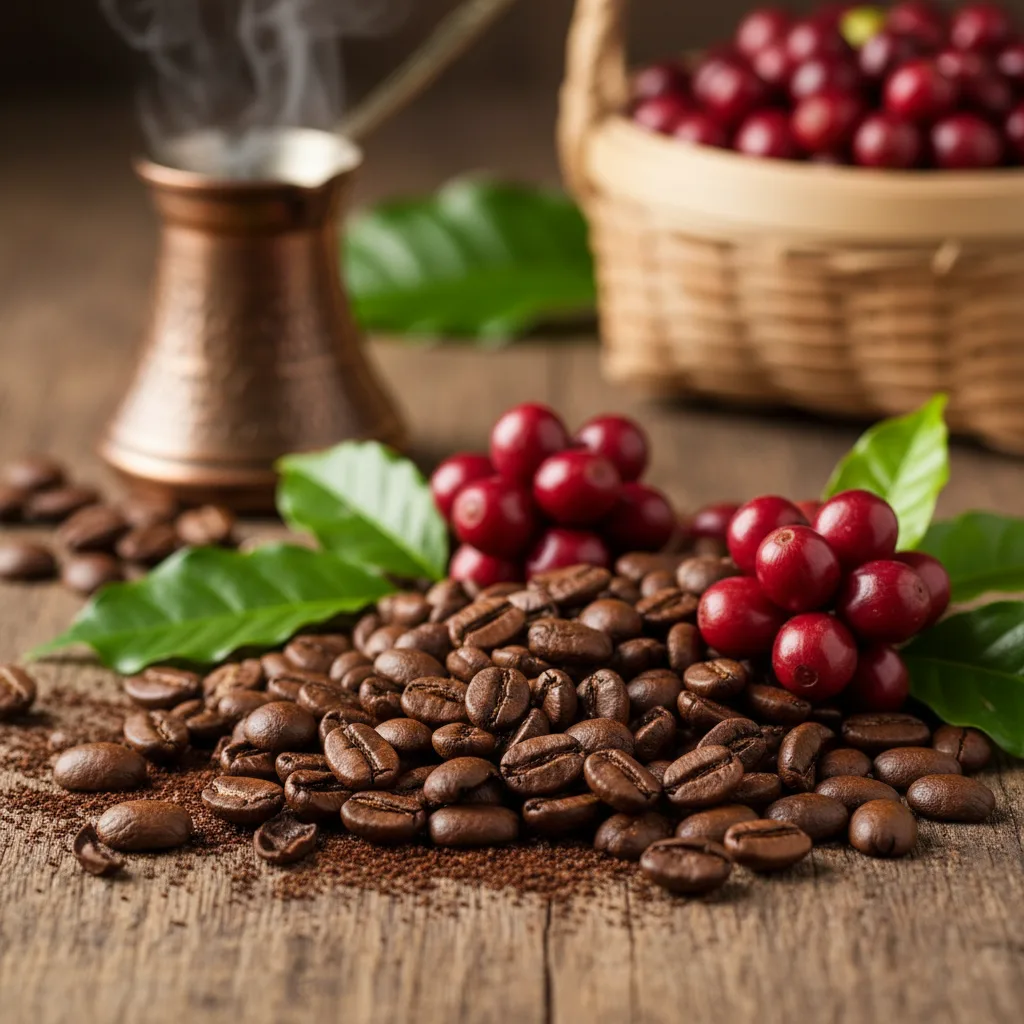
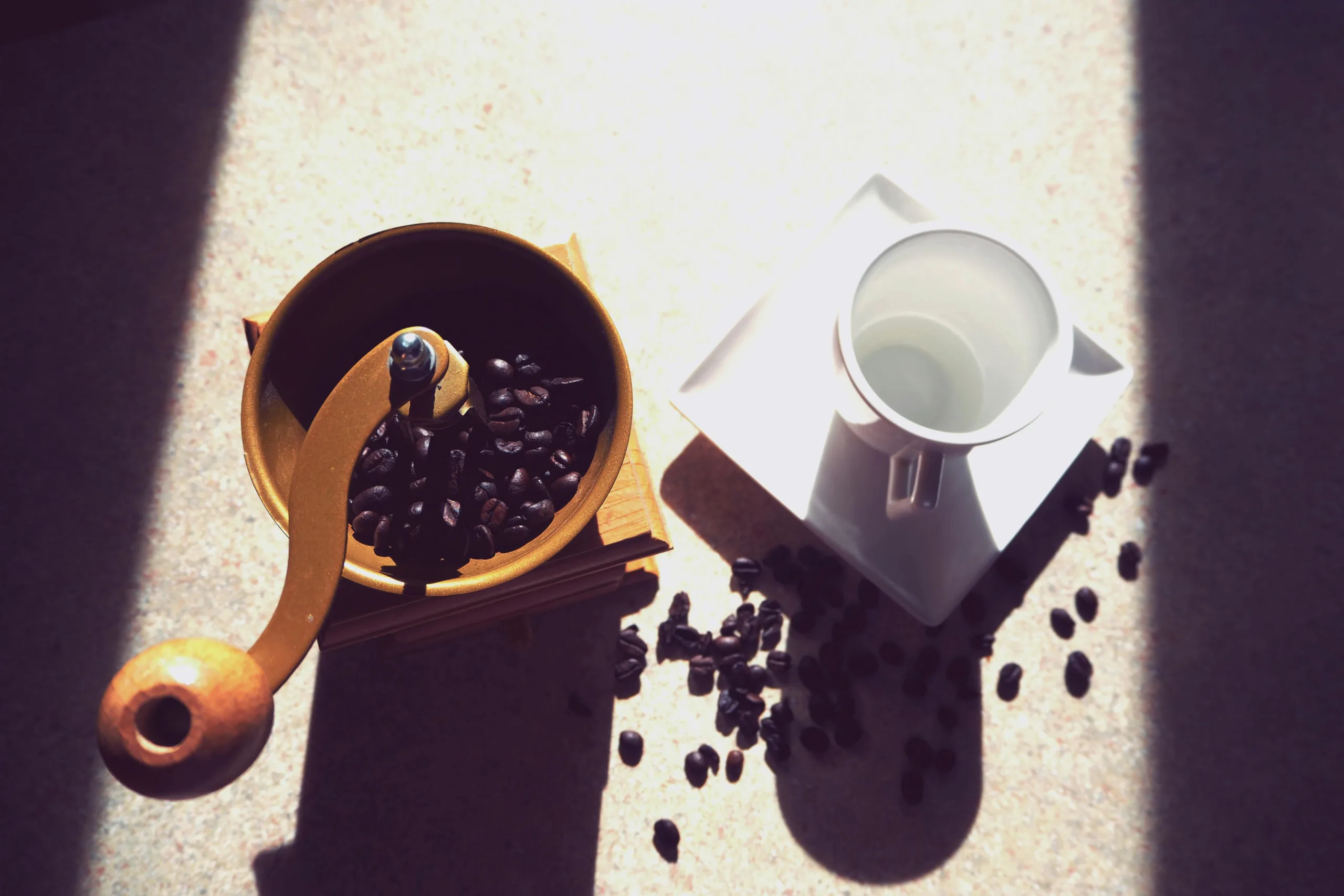
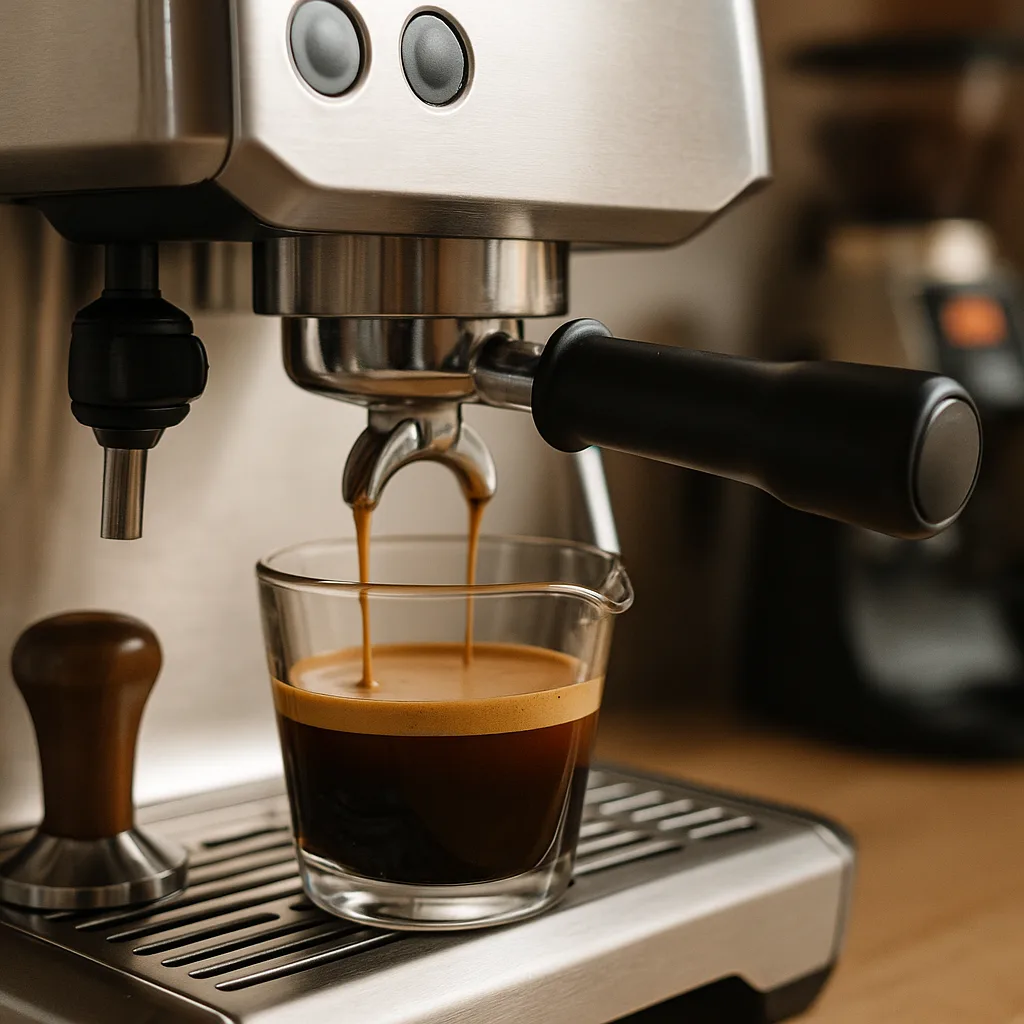
Leave a Reply
You must be logged in to post a comment.